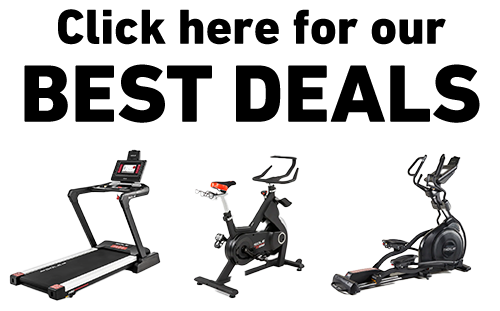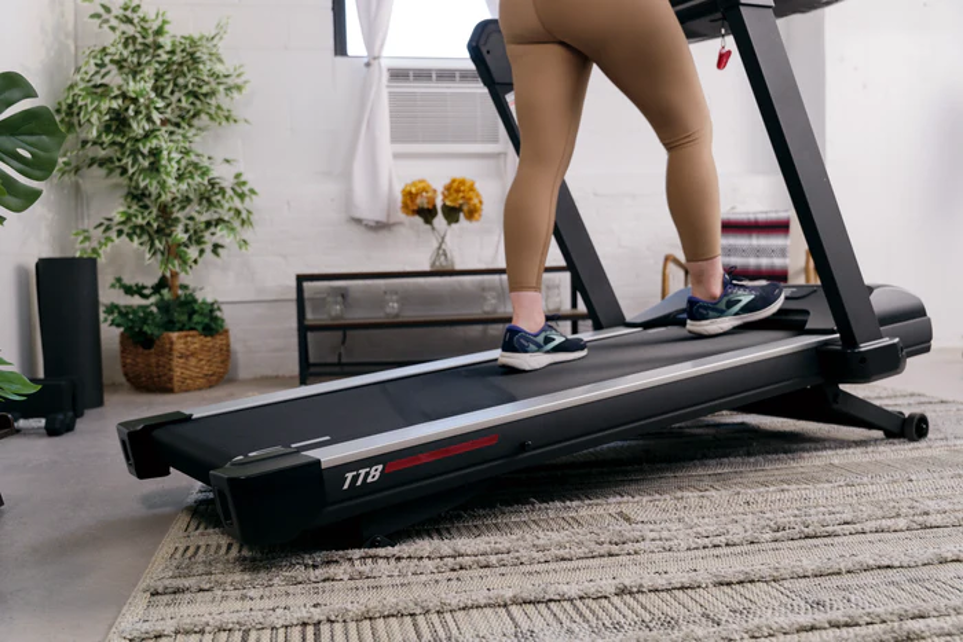Key Takeaways
- Cody Bellinger's transformation included losing 25 pounds through a strategic combination of strength training, agility work, and proper nutrition.
- His workout routine features a mix of baseball-specific exercises like medicine ball throws and rotational movements alongside traditional strength training.
- Bellinger maintains different training intensities during off-season versus in-season, with a greater focus on maintenance and recovery during competitive play.
- His nutrition plan emphasizes lean proteins, complex carbohydrates, and proper hydration to fuel performance and recovery.
- SOLE's versatile equipment supports the functional training and recovery methods that elite athletes like Bellinger prioritize.
From MVP to Comeback King: Cody Bellinger's Physical Transformation
Cody Bellinger's incredible career renaissance didn't happen by accident. The former MVP and 2023 comeback player transformed his body and his game through a carefully designed training and nutrition program that addresses the specific demands of baseball.
His journey offers valuable insights for athletes of all levels looking to enhance performance while maintaining durability. The story of Cody Bellinger's physical development begins with his frame transformation from a lanky 175-pound high school player to a muscular 213-pound major leaguer.
However, the most noteworthy chapter came when he strategically shed approximately 25 pounds to improve his mobility, bat speed, and reduce injury risk. This weight loss wasn't about aesthetics; it was a calculated performance decision that paid dividends in his resurgent seasons.
The transformation didn't happen overnight. Bellinger worked with professional strength coaches to implement a program that preserved his muscle mass while reducing body fat percentage.
|
Premium Home Gym Equipment with Award-Winning Quality! Complete Your Home Gym:
Why Choose SOLE: ✓ Commercial-grade quality for home use 30-Day Money-Back Guarantee: Love it or return it, no questions asked. |
Cody Bellinger's Weekly Training Schedule

Bellinger's structured weekly cycle develops all physical attributes needed for baseball excellence while preventing overtraining through strategic recovery periods.
Bellinger's training schedule operates on a carefully structured weekly cycle designed to develop all physical attributes needed for baseball excellence. His routine typically includes 4–5 days of intense training with strategic recovery days interspersed to prevent overtraining.
Each day has a specific focus, which allows him to systematically improve different aspects of his athletic profile without creating recovery conflicts.
Weekly Training Structure:
- Monday: Lower body strength focus - squats, hip thrusts, and single-leg work
- Tuesday: Upper body strength and throwing mechanics
- Wednesday: Mobility and light recovery work
- Thursday: Explosive power training - plyometrics and medicine ball work
- Friday: Total body integration with baseball-specific movement patterns
- Saturday: Conditioning and bat speed development
- Sunday: Complete rest or active recovery
What separates Bellinger's approach from amateur training programs is the attention to exercise selection and sequencing. Each movement serves a specific purpose in developing the athletic qualities needed for baseball, with careful consideration of how exercises interact with and complement each other.
Off-Season vs. In-Season Training Differences
Bellinger's training philosophy undergoes significant adjustments depending on whether he's in the competitive season or the off-season.
During the off-season, he prioritizes building his strength foundation with higher volume and intensity, focusing on progressively overloading his muscles to create adaptations that will support him through the grueling MLB schedule.
In contrast, his in-season training shifts dramatically toward maintenance and recovery. The volume reduces significantly, with sessions becoming shorter but more targeted.
During the 162-game marathon, Bellinger might only perform 2–3 genuine strength sessions weekly, with the primary goal of maintaining the power he built in the off-season rather than developing new capabilities.
One consistent element across both training phases is Bellinger's commitment to rotational power development. As a baseball player whose success depends largely on generating bat speed through rotational force, he incorporates medicine ball throws, cable rotations, and specialized torso training regardless of season.
How He Balances Strength and Mobility Work
What makes Bellinger's training particularly effective is his deliberate balance between building raw strength and maintaining the mobility necessary for baseball's dynamic movements.
His lower body training emphasizes a full range of motion in exercises like Bulgarian split squats and Romanian deadlifts, which develop strength while simultaneously improving mobility in key areas like the hips and hamstrings.
Pilates has become another cornerstone of Bellinger's training approach, serving as both a mobility enhancer and core strengthener.
The controlled movements in Pilates help him develop the deep stabilizing muscles needed for rotational power while maintaining the flexibility required for his long, athletic swing.
Recovery Days: What They Actually Look Like

For Bellinger, recovery days involve strategic activities like light cardiovascular work, soft tissue therapy, and sleep optimization rather than complete inactivity.
For Bellinger, recovery days aren't simply days of inactivity; they're designed to accelerate his body's natural healing processes. A typical recovery day often begins with light movement to increase blood flow without creating additional muscle damage.
This might include 15–20 minutes of steady-state cardiovascular work, keeping his heart rate between 120–140 beats per minute.
Soft tissue work forms another critical component of his recovery protocol. Whether through professional massage therapy, self-myofascial release with foam rollers and massage guns, or contrast therapy alternating between hot and cold treatments, Bellinger prioritizes techniques that reduce muscle tension and accelerate the clearance of metabolic waste products.
Sleep quality receives as much attention as any other recovery modality in Bellinger's routine. His dedication to sleep hygiene includes minimizing screen time before bed, maintaining consistent sleep schedules even during travel, and creating optimal sleeping environments.
Inside Bellinger's Diet: Fueling for Performance

Bellinger's sophisticated nutrition approach emphasizes strategic fueling and precise macronutrient timing rather than restriction.
Daily Meal Breakdown
Bellinger structures his nutrition around 4–5 carefully timed meals daily, each designed with a specific purpose. His breakfast includes a protein-rich base like egg whites or Greek yogurt paired with complex carbohydrates such as steel-cut oats or whole grain toast. These provide sustained energy for morning training.
Lunch centers on lean proteins like grilled chicken breast or wild-caught fish accompanied by nutrient-dense carbohydrates, including quinoa or sweet potatoes, plus a generous portion of colorful vegetables for micronutrients.
Afternoon snacks serve as strategic fuel with options like Greek yogurt with berries, protein smoothies with spinach and banana, or natural nut butter on whole grain crackers. Hydration remains a constant focus throughout Bellinger's nutritional strategy.
Pre-Game Nutrition Strategy
Bellinger's pre-game nutrition follows a carefully crafted timeline designed to optimize energy availability without causing digestive distress during competition.
Approximately 3–4 hours before first pitch, he consumes a balanced meal containing moderate protein, higher complex carbohydrates, and lower fat to ensure proper digestion.
As game time approaches, Bellinger transitions to more rapidly digestible carbohydrate sources. About 60–90 minutes pre-game, he might consume a small banana with honey, a sports drink, or a specialized pre-game carbohydrate supplement that provides readily available glucose for his muscles and nervous system.
Post-Workout Recovery Foods
The 30–45 minute window immediately following intense training represents a critical opportunity in Bellinger's nutritional strategy.
His post-workout nutrition includes a protein shake containing 30–40 grams of high-quality whey protein alongside simple carbohydrates like fruit or dextrose to rapidly replenish glycogen stores.
Within 1–2 hours after this initial recovery fuel, Bellinger transitions to a complete whole-food meal containing lean protein, complex carbohydrates, and vegetables. This might include salmon with quinoa and roasted vegetables.
Support Athletic Performance with SOLE Equipment

SOLE's comprehensive equipment lineup provides the functional training tools and recovery support that professional athletes like Bellinger rely on for peak performance.
SOLE's equipment supports the same principles Bellinger uses for elite performance. The F80 Treadmill provides the cardiovascular conditioning base that supports his extensive training, while the Cushion Flex Whisper Deck reduces impact stress, which is crucial for athletes managing high training volumes.
The SW180 Adjustable Dumbbells and SW155 deliver the versatility needed for sport-specific movements like rotational exercises and unilateral strength work that form the foundation of Bellinger's training.
For the explosive power development that defines Bellinger's game, the SR550 Rower provides full-body conditioning that builds the same kinetic chain coordination crucial for rotational sports.
Recovery equipment is just as important as training tools for professional athletes. The Equipment Mat provides the cushioned surface needed for mobility work and core training, while SOLE's sturdy construction ensures equipment reliability during intense training sessions.
The SOLE+ App includes athletic performance programs that emphasize the same progressive overload and periodization principles used by professional strength coaches.
Most importantly, SOLE equipment supports the long-term approach that separates amateur from professional training.
The commercial-grade construction handles the consistent use that builds athletic excellence, while the precise resistance controls allow for the systematic progression that creates measurable performance gains.
Shop our equipment collection today!
Frequently Asked Questions (FAQs)
How many days per week does Cody Bellinger work out during the season?
During the competitive MLB season, Bellinger typically engages in structured strength training 2–3 days per week. These in-season sessions focus on maintaining the strength base built during winter months rather than developing new capabilities. The intensity remains high while volume decreases substantially.
How long did it take Bellinger to lose 25 pounds for his transformation?
Bellinger's 25-pound weight loss occurred over approximately 4–5 months during a strategic off-season transformation. This gradual approach, losing roughly 1–1.5 pounds per week, allowed him to preserve valuable muscle mass while primarily targeting fat loss. The measured pace demonstrates the sophisticated methodology that separates elite athlete transformations from typical weight loss approaches.
Does Cody Bellinger follow any specific diet like keto or paleo?
Rather than adhering to labeled diet paradigms, Bellinger follows a performance-based omnivorous approach. This nutrition strategy incorporates foods from all macronutrient categories with emphasis on quality and timing rather than elimination. He consumes carbohydrates strategically around training and games, with proteins distributed throughout the day and healthy fats in moderate amounts.
What's the most important exercise in Bellinger's routine for baseball performance?
Medicine ball rotational throws stand out as particularly crucial for baseball performance. These movements directly train the rotational power that translates to bat speed, working the kinetic chain in patterns nearly identical to swinging a baseball bat. The exercise develops coordinated action from legs, core, torso, and arms while serving a preventative function by strengthening rotational stabilizers.
How can SOLE equipment help me achieve Bellinger's result?
SOLE's equipment provides the functional versatility, durability, and precision needed for sport-specific training, from adjustable dumbbells for rotational power development to impact-reducing treadmills for cardiovascular conditioning that supports the demanding training volumes required for championship-level athletics.
Image Disclaimer: Some images used in this blog post are sourced from third-party websites and remain the property of their respective owners unless otherwise stated. We do not claim ownership of these images and use them for illustrative purposes only.







Leave a comment
This site is protected by hCaptcha and the hCaptcha Privacy Policy and Terms of Service apply.